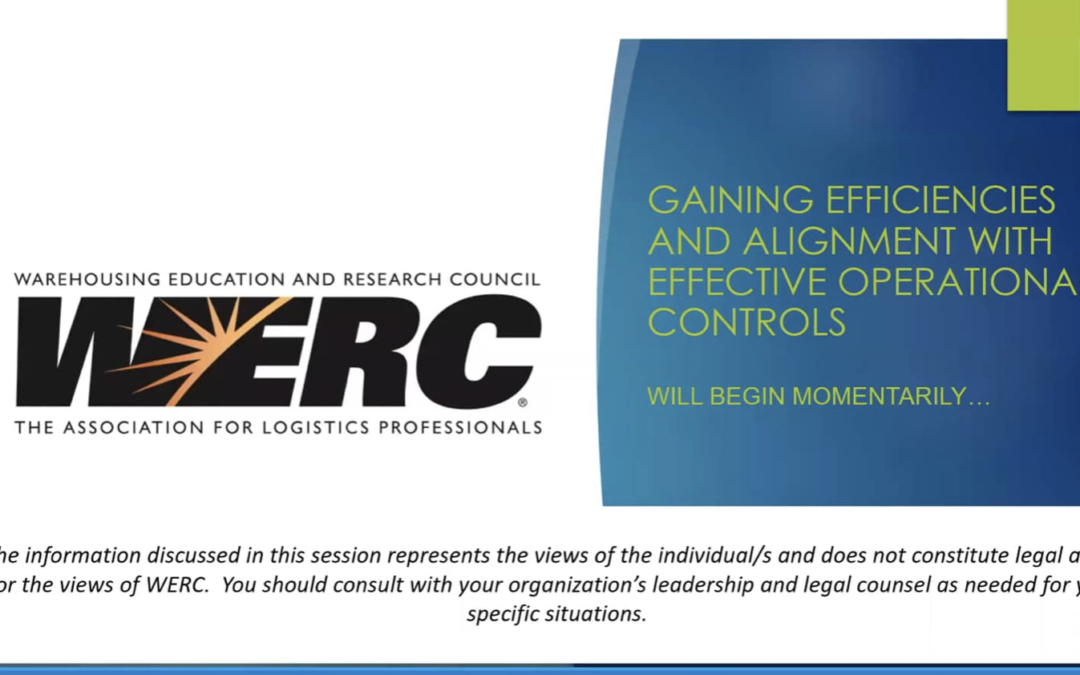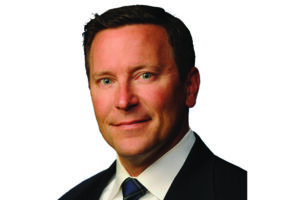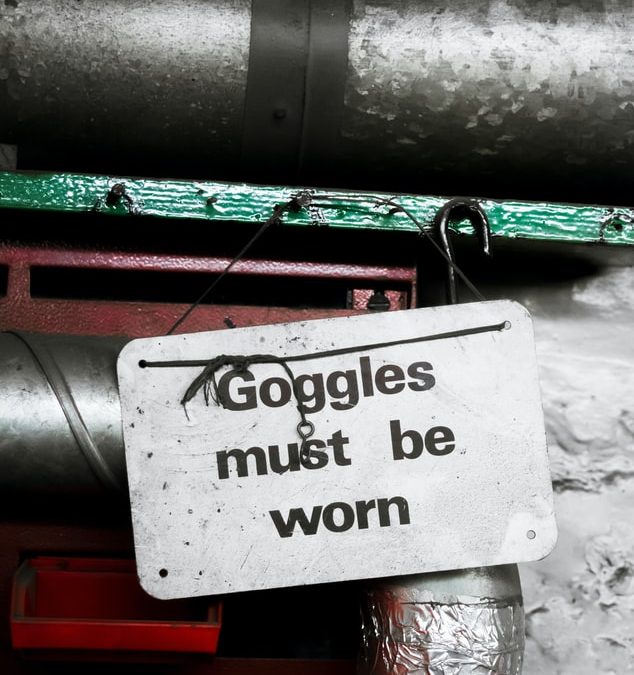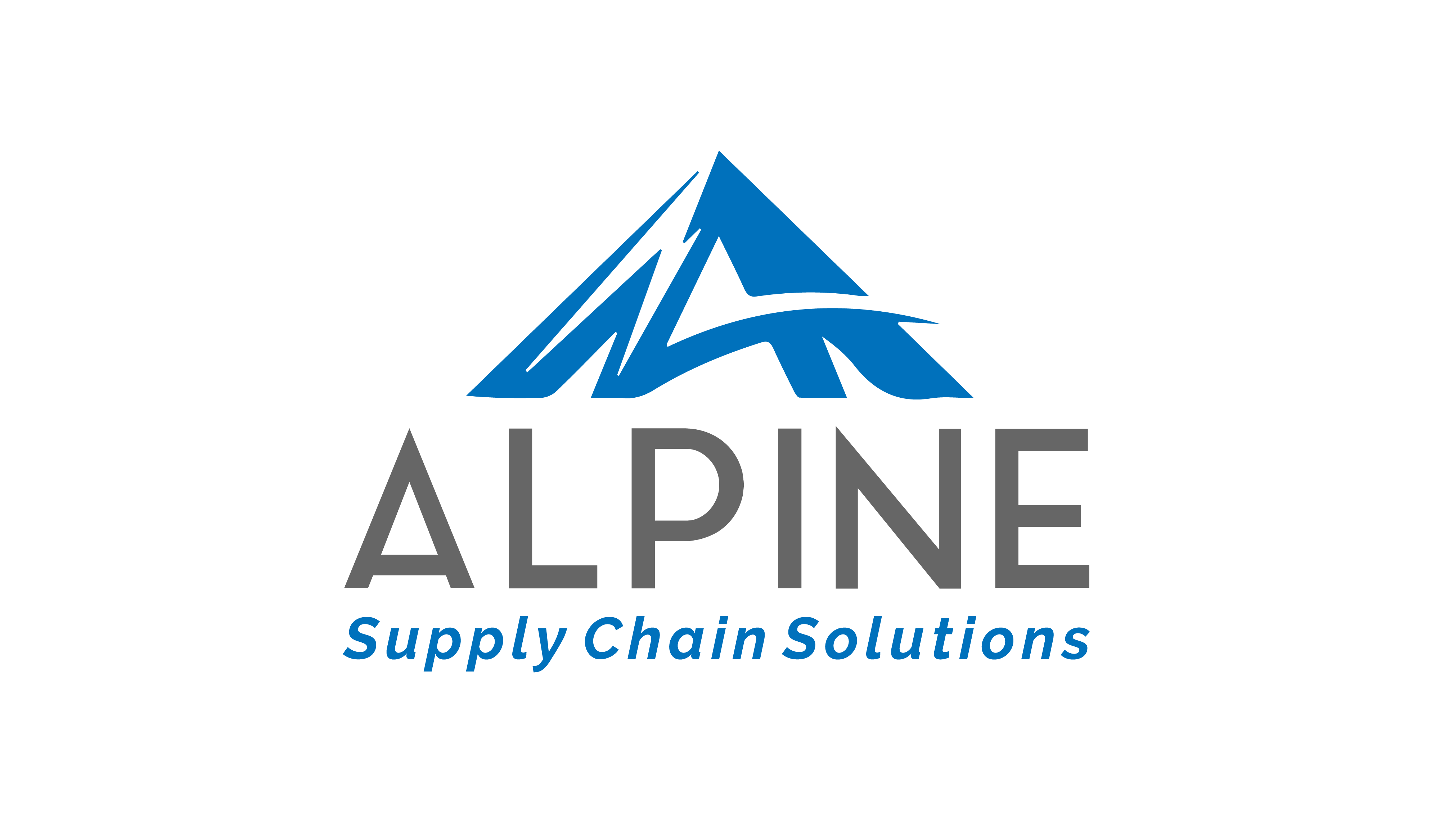
by Alpine Supply Chain | Aug 4, 2020 | Services, Supply Chain Consulting, Warehouse Consulting, Webinar
In this WERC Webinar, The Midwest WERCouncil and Alpine Solutions’ Brenda Stoltz and David Fredericks, experts in operations management conducted a webinar on How to Establish and Sustain SOPs in Your DC. You can watch now on demand.
Brenda and David dive into:
- Why standardization and consistent execution of procedures are important
- How to assess and document your current state
- Identifying and validating improvements
- Implementing new standards
- Managing ongoing oversight, compliance and continuous improvement

by Alpine Supply Chain | Jul 13, 2020 | Supply Chain Consulting, Supply Chain News, Warehouse Management System
Supply Chain Management Review and Modern Material Handling sat down with Michael Wohlwend to discuss WMS.
Modern: You’ve been around the supply chain software space throughout your career. Tell us about the different roles you’ve held.
Wohlwend: I was a warehouse distribution supply chain consultant for the first third of my career, and I installed my first warehouse management system (WMS) in 1994. That was followed by 7.5 years at Manhattan and 6.5 years at SAP. Now, I’m back to the consulting side.
Modern: Since you’ve worked in both the enterprise resource planning (ERP) and WMS spaces, what have been the most important developments during your career? We’ll start with ERP.
Wohlwend: Originally, an ERP system was finance and accounting. And then, they added manufacturing resource planning and planning. After that, ERP tried to be all things to all people and address the end-to-end supply chain. That had its limitations and opened the door for best-of-breed solution providers, especially with the Cloud.
Great examples of that are Salesforce.com for CRM and Workday for HR. Now, we see ERP companies buying Cloud-based software companies with a subscription model to offer best-of-breed solutions under the ERP umbrella. The technology is evolving.
Modern: How about the WMS space?
Wohlwend: For a time, CIOs trying to reduce their overall software footprint were getting the WMS module from an ERP provider like Oracle or SAP. In situations that weren’t complex, like pallet in and pallet out, the WMS from an ERP was good enough. Now, there’s a resurgence of WMS. The real trend I’m seeing is global manufacturers moving to a 3PL for their distribution and deferring to the 3PL’s WMS. And, most of the 3PLs will have a low-cost WMS, with less functionality, and a higher cost version. Depending on complexity, the 3PL will choose which version to roll out for their customer.
Modern: What are your clients struggling with today, particularly with WMS systems?
Wohlwend: Whenever you’re implementing a WMS, you run out of resources, time or money. So when people install a WMS, they never turn everything on because they run out of one of those three. Then, they run into an issue and don’t realize they have the functionality.
I recently went to a site that wasn’t doing directed putaway or batch picking because they’d never turned on the functionality. It cost them $52,000 and they had an ROI in two weeks. The No. 2 reason is that they business model changed. For example, with Covid-19 now they may need to turn on each picking and need to configure along with cartonization. Their WMS has the functionality but needs to be configured.
Modern: Given all the changes in fulfillment processes, what should a company do?
Wohlwend: The most common thing I see is that they didn’t turn on all the functionality, and they haven’t upgraded, so now they’re at a pivot point. Do I keep an existing system and “add on modules” like voice, labor management, or slotting modules? Or, do I rip and replace? There are companies adding “Add on Modules” on top of old versions of EXE and Catalyst.
The problem with ripping and replacing is that a lot of the new systems are in the Cloud. That sounds good, but I just worked with a 3PL that couldn’t get Internet access at their site. They had to have a server on site. And when you’re talking about an automated system that requires sub-second response times, I believe it has to be on-premise. You just can’t risk your order fulfillment system on a connection that could go down.

by Alpine Supply Chain | Jun 16, 2020 | 3PL, Distribution Network Services, Warehouse Management, Warehouse Management System
Performs Storage Type Analysis and Facility Design to right-size facility then a Network
Analysis, 3PL Selection, and onboard to support next-day delivery
Alpine Supply Chain Solutions, a leading boutique supply chain consulting firm, today announced the successful completion of a multi-faceted distribution optimization project for Mark Andy, a global manufacturer of printing presses. Alpine provided consulting services to improve space utilization, productivity and replenishment cycle times at Mark Andy’s primary distribution center in Des Plaines, IL, and conducted a network analysis to determine the best location for third party logistics (3PL) facilities to facilitate next day shipping for customers.
Mark Andy was outgrowing its 80,000-square foot distribution center and needed to determine if 40,000 or 80,000 additional square feet was needed. Alpine conducted a Storage Type Analysis, Facility Design, and Slotting project to create the right-sized product homes and place the right products into the best locations, maximizing space usage and improving productivity.

Stuart Gallup
“Alpine has a well-rounded team that understands all aspects of supply chain operations as well as current
industry standards,” said Stuart Gallup, Vice President-Commercial Market for Mark Andy Print Products. “They were able to rapidly respond to changing information in a very dynamic environment and provided the best solution at a given cost which increased our ROI.”
In addition to the warehouse optimization project, Mark Andy also recognized the need for new locations across the US to facilitate next-day delivery. Alpine conducted a Network Analysis to understand where Mark Andy customers were located and to determine the ideal number of facilities and inventory levels required to provide their network with a 98% next day service window. Alpine then conducted an in-depth RFP process and helped Mark Andy select and onboard five new 3PL locations in five months.
About Mark Andy
Mark Andy is a pioneer of the graphic arts and printing industry. As the world’s leading manufacturer of
narrow- and mid-web printing and finishing equipment, we supply leading global brands, including Mark Andy and Presstek printing presses, Rotoflex finishing solutions, as well as a complete line of Mark Andy Print Products consumables and pressroom supplies. All products are backed by the largest customer support team in
the industry, minimizing downtime and helping our customers be profitable, efficient and at the forefront of innovation. For more information, visit Mark Andy.
About Alpine Supply Chain Solutions
Alpine Supply Chain Solutions, based in Chicago, IL is a supply chain consulting company driven to ensure their clients get the most value from their investments. Their approach to every project starts with the data and ends with a cost justifiable solution. With deep roots in industrial engineering, Alpine’s approach is unique.

by Alpine Supply Chain | May 4, 2020 | COVID-19, Lean Training for Warehousing, Warehouse Management
Alpine Supply Chain’s Michael Wohlwend and Brenda Stoltz moderated a webinar about spreading safety and enagaging warehouse employees and leaders with WERC, the Warehousing Education & Research Council. The full webinar is below along with the transcript PDF.
Alpine Supply Chain Solutions has collaborated with industry partners, researched the impacts, and documented best practices, so that you don’t have to. If you’re overwhelmed by the amount of information available on how to keep your warehouse team safe in the midst of COVID-19, general COVID-19 readiness, and HR solutions, feel free to contact Alpine directly using the form to right.
About WERC:
WERC is the only professional organization focused on logistics management and its role in the supply chain. Through membership in WERC, seasoned practitioners and those new to the industry master best practices and establish valuable professional relationships. Since being founded in 1977, WERC has maintained a strategic vision to continuously offer resources that help distribution practitioners and suppliers stay on top in our dynamic, variable field. These include national, regional, local and online educational events; performance metrics for benchmarking; practical research; expert insights; and multiple opportunities for peer-to-peer knowledge exchange.
|
About Michael Wohlwend:
Managing Principal, Michael Wohlwend spent six years with SAP running the Mid-West Services business, where he was the executive sponsor on 3 SAP EWM installs. Michael also spent seven years with Manhattan Associates where he was involved in over 30+ installs. In addition, his responsibilities included RFID in a BOX. Prior to that as a member of consulting and software firms, he provided supply chain solutions for more than 30 top companies including Technicolor, Warner Brothers/Elektra/Atlantic, Sargento Foods, Johnsonville, IKON Office Solutions, Depuy, Schwarz Pharma, Long’s Drugs, Ross Stores, QVC, eLuxury, Alliance Beverage and Churchill Distributors.
In his 25 years of experience in the supply chain industry, Wohlwend has authored numerous articles for trade publications and has presented more than 70 seminars and speeches at key industry events. These events include National Conference of Operations & Fulfillment (NCOF), Warehouse Education Research Council (WERC), Council of Logistics Management (CLM), ScanTech, Distribution Computer Expo and ID Expo. He has been a board member of WERC since 2008 and Past President in 2014.
About Brenda Stoltz:
Brenda is a Human Resources Leader and an experienced Operations Manager instilled with the practical knowledge of strategic leadership and management. She holds a strong sense of business objectives and strives to develop a positive culture that promotes constructive growth. As a dynamic leader with robust interpersonal skills, she holds experience in leading highly proficient teams comprising of HR Specialists, HR Business Partners, and operations managers.
Brenda aims to develop a healthy workspace environment that nurtures new talent and helps operational partners meet their goals. Ensuring high-end compliance and execution of work responsibilities, she excels in the areas of staffing, employee relations, performance management, payroll/compliance, and development, organizational restructuring, workforce planning, and change management.
Brenda’s greatest source of inspiration comes from witnessing the growth and development of team members & operations partners. She admires working with others and helping them identify, analyze, and solve complex business issues through strategic leadership and teamwork. Besides this, she is an outdoor enthusiast who loves spending time in the company of her husband and two wonderful toddler boys.

by Alpine Supply Chain | Apr 14, 2020 | Goods-to-Person Tech, Robotics, Supply Chain Consulting, Supply Chain Technology
Michael Wohlwend, Managing Principal of Alpine Supply Chain Solutions sat down with Russell Goodman, Senior Editor of Supply Chain Brain to discuss Goods-to-Person Technology and how Alpine is using tools from several providers to meet clients implementation needs.
“All verticals and all sizes of companies can benefit from implementation of goods-to-person technology”, says Michael Wohlwend, managing principal of Alpine Supply Chain Solutions.
Goods-To-Person Technology
- Storage Analysis identify size and quantity of Pick Locations
- Storage Analysis identify size and quantity of Reserve Locations
- Slotting Optimization
How it works:
“The goods-to-person concept is simple: incoming goods are removed from pallets, either manually or automatically. The cartons and/or pieces are then placed into totes (smaller goods) or into trays (larger goods), and stored in high-density automated storage and retrieval systems (ASRS), carousels or robotic systems. As orders are required to be fulfilled SKUs are automatically retrieved from storage and brought to the picker, either at a pick station where the operator picks into an order container or to an ergonomic palletizing station where items are placed on a pallet. Since the picker does not have to walk, the focus at the pick stations and pack stations is on ergonomics and high productivity.” – Material, Handling, & Logistics

by Alpine Supply Chain | Apr 3, 2020 | Distribution Network Services
The process of finding, selecting, and implementing the correct WMS software for your company is an important process that can quickly spiral past its allotted timeline, costing your company. Learn how to avoid these delays to better your company.
In his Supply Chain Quarterly article “Ready, Set — Delay,” Alpine’s Greg Utter addresses these issues. He states, “How do you make sure that your project takes off running and can avoid being trapped in a system of ‘ready, set, delay?’ After years of implementing countless systems, we have some advice on how to make the process flow smoother.”
Also, download our free white paper to walk through the steps:
- Determining what type of warehouse solution you need
- Creating an RFP
- Assessing, comparing and selecting the right vendor
- Negotiating contracts
- Making a solid plan for implementation.
Click below for Greg’s WMS wisdom.
About Greg:
Greg is a seasoned Supply Chain Technology and Operations Professional focused on driving revenue through value engineering (ROI Analysis), and business development. He has spent his entire career as an innovative leader in Supply Chain Sales, Consulting and Implementation.
Greg possesses over 30 years of progressive hands-on experience with a broad range of mission-critical supply chain technologies including on-premise, cloud-based, and SaaS solutions. He has deep domain expertise across a variety of solutions sets including supply chain execution, supply chain planning, labor management solutions, and supply chain advanced analytics. Greg has extensive experience evaluating, selling and implementing advanced technologies related to big data, predictive analytics, and artificial intelligence.
Greg is considered an expert in roles related to “C – Level” strategic sales, business growth and expansion, value engineering and business case development. He has leadership experience in Pre-Sales Consulting, Account Executive mentoring, product strategy, training/mentoring and management consulting.
Greg spent the first 10 years of his Supply Chain career at Fleming Foods, a $40B Grocery Wholesaler, and he was responsible for rolling out WMS and Labor solutions to over 30 Distribution Centers within the Fleming network. Greg then transitioned to Dallas Systems/EXE Technologies where, for almost 10 years, he served in various Supply Chain leadership roles. Prior to joining Alpine, Greg spent 15 years at Manhattan Associates, the leading global provider of Supply Chain Software and Services. While at Manhattan, Greg had a proven track record of providing clear, timely and focused solutions to a variety of Fortune 500 Companies in all key vertical markets.
Along with his work, Greg enjoys working with WERC, Supply Chain Management Group (SCM) and CSCMP. He contributes to supply chain publications with the most recent article “READY, SET – DELAY!” in the Q1/2020 edition of CSCMP’s Supply Chain magazine. Greg also serves in various capacities with several non-profit organizations including Feeding America, Native Americans in Business, Habitat for Humanity and The American Red Cross.









